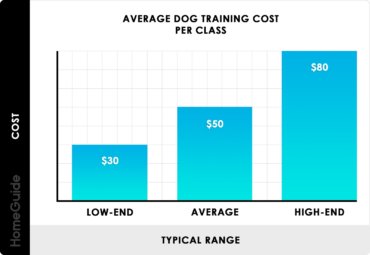


“We need to learn to understand the language of dogs so that we can understand what our dogs are telling us, that is the secret of living a good life together.”
Famed Norwegian dog trainer, Turid Rugaas, had the right idea when she said this. Coming to terms with understanding precisely what it is our dogs need is a challenge—but all humans who love dogs know that it’s one that’s worth overcoming, too.
The easiest way for a dog owner to spend time and communicate with their canine companion is through basic training. You might already know training is a necessary skill that all dogs should have, but what if you don’t have the time or the guidance?
As breeders of purebred, fully-certified white labrador puppies, Snowy Pines can help you reap the benefits of having a fully trained puppy as part of your family. When training is done right, it saves on a great deal of stress and anxiety for both you and your new friend. So before you begin searching for your next family pet, let’s go over the basics of dog training—and why you should consider a trained dog as your new household member.
Dog training is the practice of teaching dog-specific skills and behaviors, usually ones that involve obedience and socialization skills. You can train through various methods such as:
No matter which methodology you choose, the goal is to mitigate bad behavior entirely using positive experiences and building good habits. There will come the point in training when, with patience and practice, your little pooch will become a well-trained dog.
As you know, training your dog can mean many different things.
For example, you could focus on obedience for good manners. You could concentrate on socialization skills for safe trips to the park, the vet, and around other people.
You could also focus on mastering commands, like “sit,” “stay,” “come,” and recall. Or, of course, most people rely on all aspects of training, which might also involve help from a behaviorist.
Regardless of your goals, training your puppy comes down to help them gain mastery in these key practice areas:
Every year, pet owners spend more and more on food, boarding, toys, and training. In fact, in 2019, pet care spending reached a record-breaking high of nearly $100 billion.
This might sound extravagant to non-pet owners, but for those who feel unconditional love for their furry companions, it’s all a part of owning and caring for pets.

This information tells us that there’s no question that people love their four-legged friends, often counting them as family members. However, the benefits of training go beyond having a friendly dog. The fact is that pups rely on discipline and training to feel safe and protected.
While pet owners acknowledge this fact, they may not always have the time, energy, or resources to keep up with their pup’s needs.
That’s why it’s a good idea to buy an already-trained puppy. Your dog’s life is guaranteed to be better when they can, for example, head to public spaces and know exactly what’s expected of them. Additionally, welcoming pre-trained puppies from a breeder into your family and life will also help you create a closer bond with your newest family member.
One of the most common questions prospective dog owners ask is: How long does it take to train a dog? Unfortunately, there is no clear-cut answer. However, these questions can help you get more information about training timeframes:
If you want to train your dog basic obedience skills so that he stops jumping on guests or begging for food, then this is a simple task that should only take you a few weeks. However, opting for obedience, socialization, and commands will take you a few months.
While training your dog can guarantee a closer bond and understanding of one another, you also need to practice what it’s like to be a trainer for consistency in certain situations. In addition, working with a professional trainer can save you time and speed up the training process.
Training is a long process, and it needs to happen every single day. Every behavior or action needs to be taken into account, which means that you can’t just devote a couple of hours a week to training. At this stage, it’s a 24/7 job that helps determine the way your puppy will act well into adulthood.
You might know the saying, “You can’t teach an old dog new tricks,” but that couldn’t be further from the truth. You can indeed teach older dogs to learn new skills— but it just may take more time.
For example, an eight-week-old puppy who attends training classes every week will likely understand basic obedience and commands within a few weeks. On the other hand, an older dog who is used to a certain lifestyle may take months to relearn obedience skills.
Your dog’s temperament is essentially the way your dog responds to people, situations, and stimuli. That’s why the training method you choose will depend on how they look at the world and their personality type.
Generally speaking, it takes anywhere between 12 to 16 weeks to cover basics like attention and focus skills, commands like walking on a leash, “sit,” “stay,” and basic proofing.
But you can put all these worries to the side when you decide to buy a pre-trained puppy.
Puppies with training have 100 to 200 hours of training under their belt before they go to their forever homes.
This means you save on months of researching trainers, attending training sessions, and practicing your pup’s skills while also trying to juggle your busy schedule.
When looking to add to your family, one of the first things you’ll probably notice is that a trained dog is more expensive than an untrained dog. That’s because breeders spend hours of training, resources, and money to ensure that this dog is ready to go home.
If you decide to buy a puppy with no prior training experience, then you have to consider how much time and money you’ll be spending over the next few months. So, while buying a trained puppy is a more significant upfront expense, an untrained dog will require more work. You’ll also potentially spend more in the long run.
Although exact price points vary depending on where you live and the type of training you’re seeking, here are some basic costs:

When you break down and compare costs, you’ll see that 100 hours of private training costs $13,000. Similarly, 100 hours of group training costs $8,000. So, buying a pre-trained puppy at $2,500 is worth every cent.
Did you know that problematic behaviors and aggression are the most common reasons that people rehome their dogs? The best way to avoid raising an unstable adult is to socialize and train them when they’re still young. That’s because a lack of exposure to people, objects, and other dogs at a young age can fuel aggression and fear in adults.
Whether a dog has problematic behaviors like excessive barking or separation anxiety, prevention is the most successful way to avoid these. Until the puppy is adopted, the breeders’ responsibility is to ensure that they experience early stimulation practices, like socialization with the other younger dogs in their litter.
When you decide to buy a well-trained dog, your puppy will get between 100 and 200 hours of obedience, socialization, and command training so that they’re prepared to enter your home and grow into a healthy, well-adjusted adult.
Dogs will be dogs — which means that curiosity is a significant motivator when they’re still at a young age. However, curiosity can sometimes be dangerous, so puppies must know commands like “come,” “stay,” and respond to name recall.
Having a puppy that masters these commands can save his life and help in otherwise dangerous situations. For example, if your puppy gets off his leash or slips out of the backyard, then he’ll know to stop when you call his name. This could prevent him from serious harm, like becoming lost or getting hit by a car.
When you get a new puppy that is already house trained, there is automatically less frustration on your end. You can save time and effort in attempting to communicate with your puppy on an entirely new level. Plus, you get to skip the challenging part and focus on spending more time together.
Having a puppy with some pre-training allows you to play together and learn more about one another. You could effortlessly go on walks, visit public places, and even go to the vet or dog park without issue. Your puppy will learn to rely on you for comfort, safety, and friendship, which is the best thing for any dog owner.
“It became clear to me that in order to have happy, frustration-free partnerships with our dogs, we need more than just love and training,” writes Victoria Schade, a certified dog trainer. “For a relationship that truly thrives, we must cement a bond with our dog built on trust, mutual respect and regard.”
Of course, a puppy’s training is never truly over. Even if your puppy knows everything there is, it’s important to continue practicing those same skills and commands at home. Enforcing those training techniques can also help solidify your relationship.
When it comes to adopting a new fur friend, a well-trained puppy will save you time and money in the long run. You also want your new little one to be so well-socialized that problematic behaviors like chewing on furniture or being aggressive around other animals won’t be an issue. A well-trained pup can also feel more protected thanks to simple but powerful practices like recall and proper leash walking.
At Snowy Pines, we have an extensive guide for training your dog that covers everything from potty training to master basic commands. But if you’re ready to take the next step and adopt a new puppy, then contact us today to learn more about us and see our available puppies. We also offer virtual puppy training if that’s something you would be interested in.